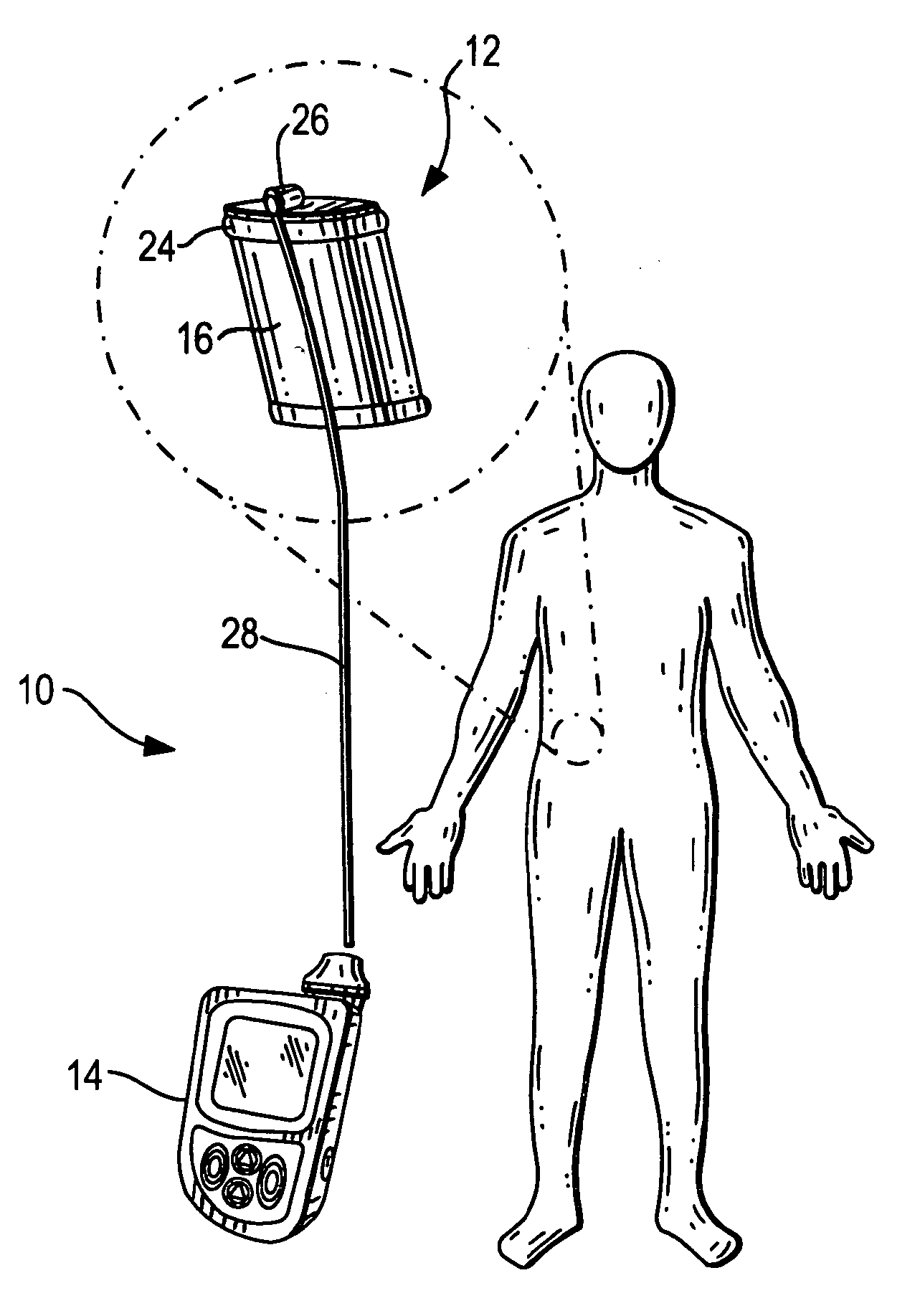Therapeutic hybrid implantable devices
- Summary
- Abstract
- Description
- Claims
- Application Information
AI Technical Summary
Benefits of technology
Problems solved by technology
Method used
Image
Examples
example 1
Regulation of Glucose Levels in Animals Implanted with a Hybrid Device Comprising Islets of Langerhans
[0167]Lewis rats were rendered diabetic with intravenous injections of streptozotocin and used as islet graft recipients only if nonfasting glycemic values were ≧350 mg / dL on whole blood samples. Half of the animals were then implanted 40 days before islet transplantation with a hybrid device of the invention in the subcutaneous space of the infrascapular area. The pre-implantation facilitated embedding of the device perforated walls into the collagen-rich and well-vascularized tissues of the recipient. During this time, the adjacent space of the device contained a Teflon® plunger to prevent recipient tissue from obstructing the space.
[0168]Syngeneic islets were then isolated by methods known in the art. A partial incision was made in each of the animal subjects, and the Teflon® plunger was removed from animal subjects implanted with the device. Using a small catheter and a syringe...
example 2
Dose-Dependent Reversal of Diabetes in Animals Implanted with a Hybrid Device Comprising Islets of Langerhans
[0170]C57BL / 6 mice were rendered diabetic with intravenous injections of streptozotocin and implanted with a hybrid device of the invention in the subcutaneous space. Incision of the skin>80 days from implantation allowed exposure of the subcutaneous space and of the device, showing intense vascular networks around the connective tissue embedding the device (FIG. 17). Titration experiments with increasing numbers of syngeneic islets (500, 1,000, and 2,000 IEQ) were performed by depositing the islets into the prevascularized hybrid devices six weeks after implantation. As seen in FIG. 18, the time to diabetes reversal was dependent upon the deposited dose of islets.
example 3
Transplant Viability in Animals Implanted with a Hybrid Device Comprising Islets of Langerhans, with or without Systemic Immunosuppression
[0171]Lewis rats were rendered diabetic with intravenous injections of streptozotocin. Six weeks before islet transplantation, the chemically-diabetic animals were implanted with a hybrid device of the invention in the subcutaneous space of the infrascapular area. The pre-implantation facilitated embedding of the device perforated walls into the collagen-rich and well-vascularized tissues of the recipient. During this time, the adjacent space of the device contained a Teflon® plunger to prevent recipient tissue from obstructing the space.
[0172]Allogeneic islets (approximately 7,000 IEQ) from Wistar Furth donor rats were then deposited into the neovascularized spaces of the hybrid devices, using the methods described in Example 1. Post-transplantation, half of the animal subjects were treated systemically with immunosuppressive agents starting on t...
PUM
| Property | Measurement | Unit |
|---|---|---|
| Biological properties | aaaaa | aaaaa |
| Therapeutic | aaaaa | aaaaa |
| Biocompatibility | aaaaa | aaaaa |
Abstract
Description
Claims
Application Information
 Login to View More
Login to View More - R&D
- Intellectual Property
- Life Sciences
- Materials
- Tech Scout
- Unparalleled Data Quality
- Higher Quality Content
- 60% Fewer Hallucinations
Browse by: Latest US Patents, China's latest patents, Technical Efficacy Thesaurus, Application Domain, Technology Topic, Popular Technical Reports.
© 2025 PatSnap. All rights reserved.Legal|Privacy policy|Modern Slavery Act Transparency Statement|Sitemap|About US| Contact US: help@patsnap.com



